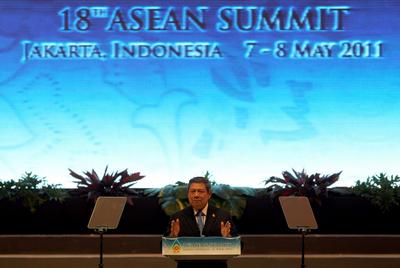After extensive negotiations, Wei Benhua, former Deputy Administrator of the State Administration of Foreign Exchange, China, has been appointed inaugural director of AMRO. This has come as a surprise to the Japanese government, who were keen to have a Japanese national direct the unit.
The CMIM initiative has been acknowledged by many economists as a promising East Asian project for the prevention of economic crises. The first AMRO director will have a large role to play in dealing with macroeconomic and financial soundness in the region, while global economic recovery remains fragile. For ASEAN+3 member countries, the successful operation of AMRO will be expected to provide opportunities to increase the IMF delinked portion of CMIM to more than 20 per cent. If that the case, the member countries do not necessarily need to be under IMF arrangement if they want to draw liquidity support more than 20per cent. In the current CMIM arrangement, a requesting country should stick with IMF program in order to get the rest of 80per cent support fund (IMF-linked portion). The efficacious performance of the first AMRO director and his incoming team will build confidence in the provision of such financial assistance in the region.
Operationally, beside administrative and managerial issues, the AMRO director will be required to provide a high standard of economic surveillance output, as the CMIM will utilise the output in its decision-making processes. As a symbiotic component of CMIM, AMRO will play a significant role not only in disbursing liquidity support for requesting countries, but also in the post-disbursement phase. AMRO is dedicated to monitor member countries’ macroeconomic development, and determine the level of economic risks if crisis occurs in any member country. Therefore, the economic assessment made by AMRO will significantly affect to the success of the objective of CMIM in providing liquidity support arrangement. The impartiality and professionalism of the AMRO team will therefore be repeatedly tested, as they will be recruited from ASEAN+3 member countries that may face liquidity difficulties in the future.
AMRO will not immediately become a solitary reference point for economic monitoring and surveillance in the East Asia region. It will have to find a way to differentiate its products from the outputs of the Office of Regional Economic Integration (OREI) of the Asian Development Bank (ADB), and the ASEAN Integration Monitoring Offices (AIMO).
Some have argued that AMRO will compete with the IMF in providing surveillance reports. Several newspapers put forward this argument immediately after the ASEAN+3 Finance Deputies Meeting (AFDM+3) in Bali this year. This claim is unjustified as AMRO follows the IMF style of surveillance rather than adopting an original method. Wei’s experience as Executive Director of the IMF may help him to run the new institution in a manner that imitates the Fund’s endeavours. AMRO’s reports are thus more likely to serve as supplements to the IMF’s global surveillance and article IV consultation, rather than become competitors. This is in line with the recommendation of the East Asia Vision Group Report.
As a regional economic surveillance unit, AMRO basically has the chance to do more than the IMF has done in East Asia region. With regional resources and experts, AMRO could potentially produce better monitoring system that leads to more informed analysis than the IMF’s. The 1997 Asian Financial Crisis taught a lesson learnt about the IMF surveillance system which miscalculated the economic turbulence that slammed East Asian countries at that time. Regional savvy may lead AMRO to provide earlier warning of risk than other institutions. Put simply, AMRO should act audaciously and provide more than just a supplement to the existing global surveillance.
The question is whether AMRO can breakaway from the IMF’s long established patterns of economic surveillance? Perhaps the new leader will provide an answer.
Eko Nugroho Mardi Saputro is a PhD Student at the School of International and Political Studies, Deakin University, Melbourne.

